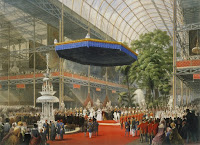 |
| 'Found', by Dante Gabriel Rossetti Delaware Art Museum Public domain |
The Acts
Victorian prostitutes mainly served working-class men in squalid conditions, and their typical clients were soldiers and sailors, who tended to be single because of their conditions of service. Their middle-class clients were mainly young single men (rather than married men). At Oxford in the 1840s the proctors’ records suggest a figure of between 300 and 400 prostitutes in a city of 25,000 people of whom 1,500 were students.Prostitution was a widely-recognised social problem that occupied many philanthropists, such as the wealthy heiress, Angela Burdett-Coutts, who founded a home for young women, Urania Cottage. See here for Dickens's involvement with the scheme. There are interesting discussions here and here.
The three euphemistically titled Contagious Diseases Acts (1864, 1866, 1869) were an attempt by the British government to regulate prostitution in the manner of other European countries such as France in order to reduce the sexually transmitted diseases that plagued the British army and navy. The acts applied to specifically named ports and garrison towns, although the ultimate intention was to include all of Britain.
The first Act stipulated that within a radius of eleven army camps and naval ports, a woman suspected of prostitution had to register with the police and receive a compulsory medical examination. If the examination revealed disease, she would be confined to a ‘lock’ hospital for a period of up to three months.
The Act of 1864 was replaced by a new Act in 1866, which added Chatham and Windsor to the number of subjected towns and introduced the enforcement of fortnightly examinations of prostitutes. The third Act of 1869 extended the provisions of the second Act to cover a total of eighteen towns in the British Isles. The maximum period of detention for a diseased prostitute was extended to nine months.
The CD Acts were administered by units of plainclothes policemen seconded from the Metropolitan Police. They were given sweeping powers to determine who was a prostitute. No warrant or probable cause was needed. The victims were not merely prostitutes but working-class women in general, many of them illiterate, who were locked up without any regard for their legal rights. If a girl signed papers agreeing to an examination, her agreement was a de facto acknowledgement of prostitution. She was then required to be re-examined regularly. If she refused to sign the papers, she could be held in prison for months.
The examinations were often brutal. Typically, the woman's legs were clamped open and her ankles tied down. Surgical instruments - sometimes not cleaned from prior inspections - were inserted so inexpertly that some women miscarried. Others passed out from the pain or from embarrassment. Some women with harmless conditions were misdiagnosed and locked in hospitals without recourse.
Because men were not included within the provisions, the Acts embodied the double standards of sexual morality in which prostitution was seen as an unavoidable, and perhaps necessary, evil.











